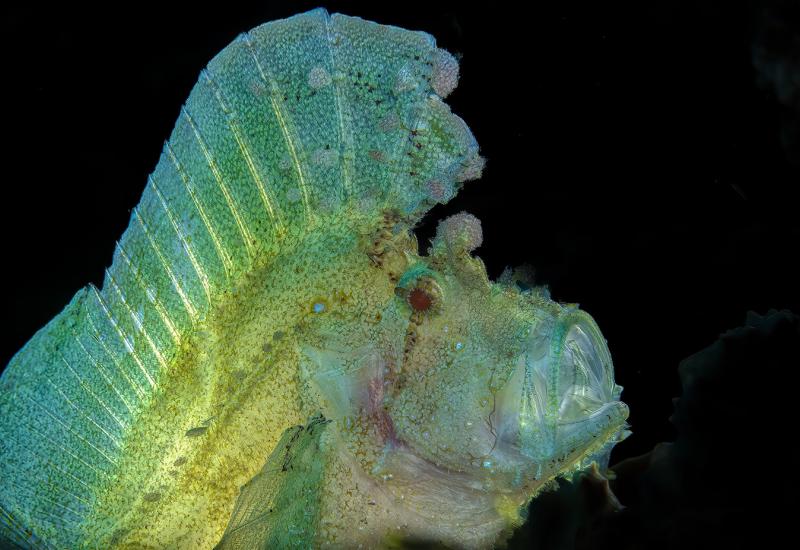Ask a Marine Biologist: Why Are Polar Ocean Animals Giant?

Shutterstock.com/Artsiom P
Question: Why are some ocean creatures at the poles bigger than their counterparts in warmer waters? Laura S, Antarctica (yes, really)
Answer: This phenomenon is known as polar gigantism–and it’s an active area of scientific debate!
There are a few leading theories, but before we discuss them, let’s define the term. Polar gigantism refers to the phenomenon that animals that live at the poles (in the Southern Ocean and Arctic Ocean) are significantly larger than their relatives that live near the equator. This happens with a variety of different marine invertebrate groups, like the world’s largest invertebrate–the colossal squid–which can only be found in Antarctic waters. Polar gigantism has also been documented among crustaceans, jellyfish and echinoderms. A similar phenomenon you may have heard of is deep sea gigantism, in which animals that live in the deep sea (deeper than 3,000 feet/1000 meters) are larger than their relatives in shallow water. So what might cause this?
Related Reading: Polar Precision: Exploring Seiko's Newest Dive Watch
One leading hypothesis is known as “the oxygen temperature hypothesis,” which posits that an animal can only grow as large as its environment allows. Basically, if you get too big, you cannot breathe without sufficient oxygen. Living in very cold water affects this in two ways–and trust me, I have stuck my hand in the water in both the Arctic Ocean and the Southern Ocean off Antarctica–this water is extremely cold! Cold water can hold slightly more oxygen than warm water, and cold water adaptation leads to very slow metabolic rates. Organisms that have adapted to cold water therefore need less oxygen in their day-to-day lives, and as a result, they are capable of growing larger.
Other hypotheses have to do with ecology and evolutionary pressures, as there are fewer predators of marine invertebrates at the poles than there are in tropical waters. Without this pressure to grow quickly for survival, there’s no rush to get big fast and reproduce before you’re eaten. Other possible explanations suggest the slightly different availability of silica in polar waters allows organisms to build larger shells more easily.
Some researchers have pointed out that polar gigantism may not even be a real or consistent phenomenon because not every animal that lives at the poles is larger than their temperate or tropical cousins, and there are numerous big invertebrates outside of the poles. It may just be a coincidence that some of the largest representatives of several of these invertebrate groups happen to live in Antarctica and the Arctic.
Related Reading: The Dark Side of Our Fascination with Antarctica
No one knows with certainty which hypothesis is closest to reality, but this is exactly why the scientific study of life and ecosystems at the poles needs to be an international priority. Polar zones have unique biological and ecological features not found anywhere else, including iconic species like polar bears, penguins, walruses and leopard seals. If their habitats are destroyed and the animals go extinct, we will never know the answer to these scientific mysteries.
Ask a Marine Biologist is a monthly column where Dr. David Shiffman answers your questions about the underwater world. Topics are chosen from reader-submitted queries as well as data from common internet searches. If you have a question you’d like answered in a future Ask a Marine Biologist column, or if you have a question about the answer given in this column, email Shiffman at [email protected] with subject line “Ask a marine biologist.”

Courtesy David ShiffmanImage of David Shiffman
Dr. David Shiffman is a marine conservation biologist specializing in the ecology and conservation of sharks. An award-winning public science educator, David has spoken to thousands of people around the world about marine biology and conservation and has bylines with the Washington Post, Scientific American, New Scientist, Gizmodo and more. Follow him on @WhySharksMatter on Twitter, Facebook and Instagram, where he’s always happy to answer any questions about sharks.
The views expressed in this article are those of David Shiffman, and not necessarily the views Scuba Diving magazine.










